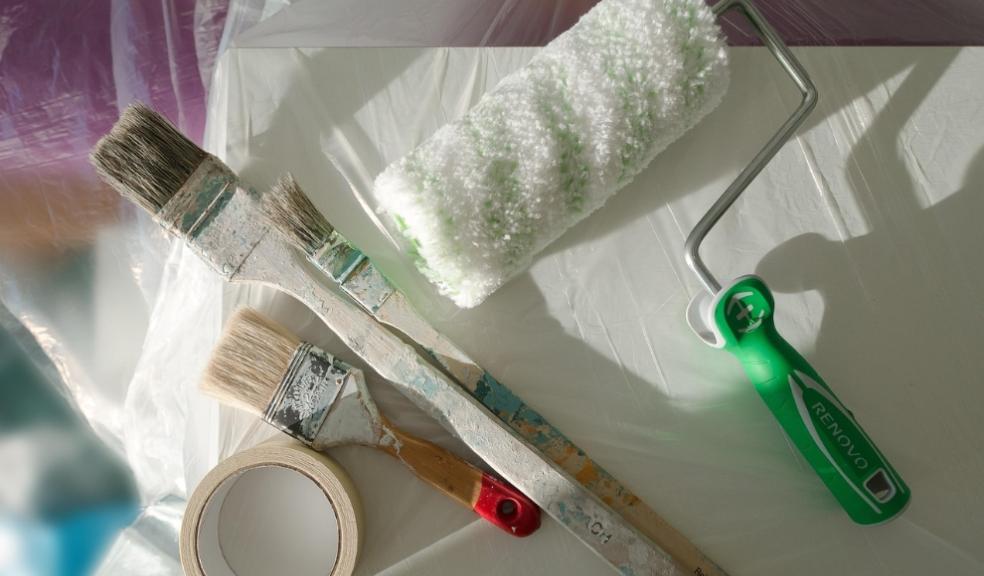
Eco-conscious renovations: How to choose the most sustainable building materials
According to Aviva research, 7 million UK homeowners plan to renovate their homes within the next two years. And for those planning renovations, there is a growing desire to improve a home's eco-credentials, with NatWest finding that 65% of homeowners plan to improve the environmental sustainability of their home in the next 10 years.
Sustainable wood specialists EGGER have a commitment to the environment and sustainable business practices and are keen to share their experience and advice to help build the knowledge of others.
Please find below some information around the environmental impact of renovations, as well as practical tips to help your readers plan a more environmentally friendly property transformation.
The environmental impact of a renovation
Home renovation projects can have a significant environmental impact if not handled responsibly. It isn't hard to see why: excessive amounts of waste sent to landfills, irresponsibly sourced natural materials, the production of certain materials, and the cost of transportation are just a few of the renovation factors impacting the planet.
With the building and construction sector being responsible for a staggering 37% of global emissions (UN Environment Programme), homeowners, professional house flippers, and builders alike are looking for ways to make their projects more sustainable. In fact, according to a NatWest survey, 65% of homeowners already plan to make home improvements to make their properties more environmentally sustainable over the next decade.
Fortunately, there are ways to make renovations more eco-conscious to lessen your environmental impact. Not only this, but you can make sustainable changes which have a much more positive impact in the long term. You can use the property transformation as a way to make the building more energy efficient, such as by upgrading insulation or opting for triple glazing. This can reduce the carbon footprint of the person living in the property, as well as reduce their energy bills.
The future of sustainable design
The popularity of sustainable design has increased steadily over the past few years and is widely predicted to continue as more of us look to make our homes more eco-friendly. But what exactly might this look like? Well, as expected, responsibly sourced natural materials will continue to be key in home renovations. Timelessly stylish and durable materials like wood will always dominate, but we are seeing innovations in this area, too. For example, mycelium, the root system of fungus, is being used as an eco-friendly alternative to plastic in insulation panels (BBC News).
We are also seeing an increase in material manufacturers becoming fully circular and offering recycling services as part of their business. Some companies even recycle materials they didn't produce, showing us that the push for sustainability goes beyond individual responsibility and is becoming an industry-wide commitment.
4 ways to make sure your renovation materials are sustainable
In the midst of planning your next home transformation project? Here are four practical tips to help you make your renovation more sustainable.
Go natural
One of the most effective (and stylish!) ways to make your renovation more sustainable is to opt for natural materials where you can. Natural renewable materials, such as wood and cork that come from sustainable forestry, are especially eco-conscious choices. Not only do they usually have a lower environmental footprint than synthetic materials like PVC and vinyl, as they don't use as much energy to produce, but they also come from non-depletable sources. On top of this, well-crafted natural materials can be more durable than some synthetic alternatives, too. So, while the upfront costs may be higher, they can be more cost-effective in the long run, as well as a more eco-conscious choice.
Verify any sustainability claims from the manufacturer
Unfortunately, with a growing interest in becoming more sustainable, we've also seen a rise in businesses claiming to be environmentally friendly even when this isn't the case. In fact, International Consumer Protection Enforcement Network (ICPEN) research has found that 40% of green claims made by firms online may actually be misleading (GOV.UK).
Always do your research before choosing a material supplier to ensure you aren't being greenwashed. A good place to start is by looking at the company's website to see if it has a sustainability strategy or examples of how the business has employed eco-friendly practices. These should be concrete examples, highlighting exactly how they have become more sustainable, such as by using recycled wood. You can also look for third-party certifications given to the company, like FSC (Forest Stewardship Council) and PEFC (Programme for the Endorsement of Forest Certification) certifications.
Buy from a local supplier
Sourcing materials locally can be an effective way to reduce the carbon footprint of your project. The construction industry is estimated to be responsible for 1% of transport emissions, so it's important to find ways to reduce the greenhouse gas emissions of transport where we can (amcs).
If you do opt for materials from a non-local supplier, look for suppliers who pride themselves on making their transport as eco-friendly as possible. For example, some more eco-conscious companies transport materials via rail when they can, as this is more sustainable than doing so via road.
Opt for trend-proof materials
Sustainability isn't just about the materials themselves — you need to consider the longevity of the materials. Materials should, of course, be high-quality to ensure durability, but you should also opt for trend-proof styles that won't quickly go out of fashion and fade into obscurity. Choosing classic materials in timeless designs and neutral colourways that won't go out of style will likely lead to less frequent renovations, which in turn will reduce the environmental impact of any potential future home changes.
"Renovating is a great opportunity to release your inner interior designer, whether you're restyling your own home or doing up a property to sell. But it's important to think beyond just aesthetics and consider the long-term impact of our choices, especially on the planet. Home renovations can increase our carbon footprint, but they don't have to. In fact, with careful planning and research, we can create sustainable properties that end up being much better for the planet in the long term.
"By choosing responsibly sourced materials from eco-conscious suppliers, you can make your renovation project more sustainable. And by opting for high-quality materials, you can lower both your carbon footprint and your bills over time."- Jenny Oliver, Head of Marketing for UK and Ireland, EGGER









